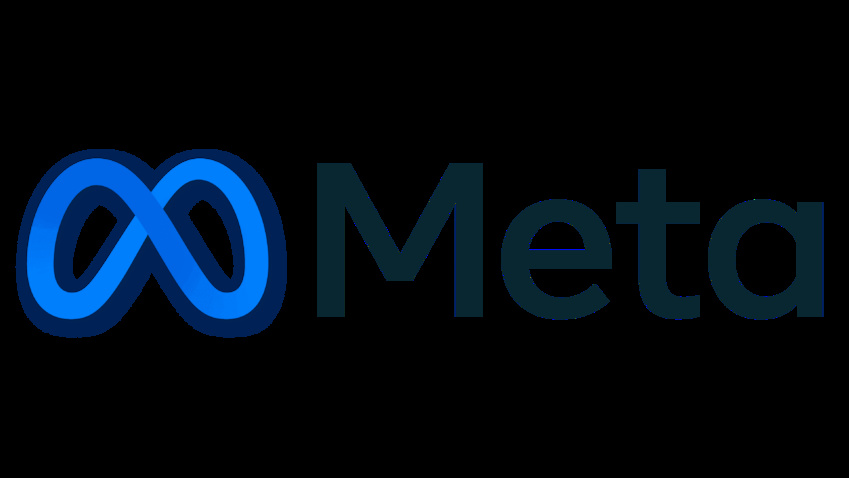Data centers are the backbone of our digital world, enabling online activities ranging from internet access to digital communication. As the largest consumers of Meta's energy, water, and greenhouse gas emissions, data centers represent a crucial opportunity for reducing our environmental impact. But what does a sustainable data center really look like?
In essence, a sustainable data center is one that balances environmental responsibility with reliable, secure data processing and storage. This requires prioritizing energy efficiency, embracing renewable energy, conserving water, and reducing waste.
At Meta, we are committed to designing and operating the most sustainable data centers in the world. Our approach centers on energy efficiency, which is critical given that data centers already consume 1% of the world's electricity. Our centers incorporate energy-efficient hardware and cooling systems that use outdoor air and direct evaporative cooling to save energy and water. We also prioritize building sites that promote biodiversity, leveraging native plants and adaptive landscapes that mimic natural hydrology and mitigate the urban heat island effect.
We recognize that the use of renewable energy sources is also vital to reducing the carbon footprint of our data centers. That's why our data center fleet is supported by 100% renewable energy across six countries and more than 20 U.S. states. We are committed to maintaining this standard as we continue to grow our operations, with more than 70 new solar and wind projects adding over 9,000 megawatts of clean electricity to the U.S. grid. By prioritizing sustainability in our data centers, we aim to create a more responsible and resilient digital world.
“Our renewable energy projects are diverse and driven by where we have an operational footprint,” Amanda Yang, Meta’s head of renewable energy for Americas West and the Asia-Pacific, recently shared with Triple Pundit. “One of our primary values is ensuring that we are adding new renewable capacity in the areas in which we operate.”
Yanf went on to add, “While 100% of our global operations are supported by renewable energy, ultimately we are focused on continuing to evolve our approach to how we can help accelerate grid decarbonization. Where we can, we are partnering with our utilities, developers, and regulators to make this happen.”
Meta is committed to becoming water positive by 2030, and we recognize that reducing our water use is an essential step in achieving this goal. To conserve water, we employ various measures such as using recycled water for construction purposes whenever possible, implementing best management practices to reduce construction water needs, and recycling water within our facility multiple times to minimize our water usage. We also use a combination of native plant species, efficient irrigation, and alternative water sources outside of our buildings, along with smart scheduling technologies. Through these efforts, we are able to save nearly 130 million gallons of water per year.
To achieve our net zero and waste reduction targets, we embrace a circular approach that considers waste as a valuable resource that can be reused, repurposed or recycled. We actively work to keep data center construction and demolition waste out of landfills and incineration facilities by recovering, reusing and recycling materials. In 2022 alone, we were able to recycle, reuse or donate 158 thousand tons of waste, diverting 91 percent of potential waste from local landfills. Additionally, we source products certified by the Forestry Stewardship Council (FSC) for all permanently installed wood in both our offices and data centers, which confirms environmental protections for responsible forest management and prohibits the use of highly hazardous chemicals.
We prioritize the use of recycled materials in new data center hardware system designs, as well as ensuring that hardware is easy to disassemble and reuse. We also explore ways to extend the life of racks and components used in our data centers, and work closely with our downstream partners to find a second life for parts outside of our data centers through secondary markets. Our ultimate goal is to ensure that all residual materials are responsibly managed.
Finally, we believe that green certifications such as LEED Gold and LEED Platinum are essential in ensuring that our data centers meet the highest standards for environmental and sustainability criteria related to design and construction. Today, 33 of our data center buildings are certified LEED Gold, as well as LEED Platinum in Luleå, Sweden, representing more than 19 million square feet in all.
In essence, a sustainable data center is one that balances environmental responsibility with reliable, secure data processing and storage. This requires prioritizing energy efficiency, embracing renewable energy, conserving water, and reducing waste.
At Meta, we are committed to designing and operating the most sustainable data centers in the world. Our approach centers on energy efficiency, which is critical given that data centers already consume 1% of the world's electricity. Our centers incorporate energy-efficient hardware and cooling systems that use outdoor air and direct evaporative cooling to save energy and water. We also prioritize building sites that promote biodiversity, leveraging native plants and adaptive landscapes that mimic natural hydrology and mitigate the urban heat island effect.
We recognize that the use of renewable energy sources is also vital to reducing the carbon footprint of our data centers. That's why our data center fleet is supported by 100% renewable energy across six countries and more than 20 U.S. states. We are committed to maintaining this standard as we continue to grow our operations, with more than 70 new solar and wind projects adding over 9,000 megawatts of clean electricity to the U.S. grid. By prioritizing sustainability in our data centers, we aim to create a more responsible and resilient digital world.
“Our renewable energy projects are diverse and driven by where we have an operational footprint,” Amanda Yang, Meta’s head of renewable energy for Americas West and the Asia-Pacific, recently shared with Triple Pundit. “One of our primary values is ensuring that we are adding new renewable capacity in the areas in which we operate.”
Yanf went on to add, “While 100% of our global operations are supported by renewable energy, ultimately we are focused on continuing to evolve our approach to how we can help accelerate grid decarbonization. Where we can, we are partnering with our utilities, developers, and regulators to make this happen.”
Meta is committed to becoming water positive by 2030, and we recognize that reducing our water use is an essential step in achieving this goal. To conserve water, we employ various measures such as using recycled water for construction purposes whenever possible, implementing best management practices to reduce construction water needs, and recycling water within our facility multiple times to minimize our water usage. We also use a combination of native plant species, efficient irrigation, and alternative water sources outside of our buildings, along with smart scheduling technologies. Through these efforts, we are able to save nearly 130 million gallons of water per year.
To achieve our net zero and waste reduction targets, we embrace a circular approach that considers waste as a valuable resource that can be reused, repurposed or recycled. We actively work to keep data center construction and demolition waste out of landfills and incineration facilities by recovering, reusing and recycling materials. In 2022 alone, we were able to recycle, reuse or donate 158 thousand tons of waste, diverting 91 percent of potential waste from local landfills. Additionally, we source products certified by the Forestry Stewardship Council (FSC) for all permanently installed wood in both our offices and data centers, which confirms environmental protections for responsible forest management and prohibits the use of highly hazardous chemicals.
We prioritize the use of recycled materials in new data center hardware system designs, as well as ensuring that hardware is easy to disassemble and reuse. We also explore ways to extend the life of racks and components used in our data centers, and work closely with our downstream partners to find a second life for parts outside of our data centers through secondary markets. Our ultimate goal is to ensure that all residual materials are responsibly managed.
Finally, we believe that green certifications such as LEED Gold and LEED Platinum are essential in ensuring that our data centers meet the highest standards for environmental and sustainability criteria related to design and construction. Today, 33 of our data center buildings are certified LEED Gold, as well as LEED Platinum in Luleå, Sweden, representing more than 19 million square feet in all.


 Meta's Approach to Sustainable Data Centers: Energy Efficiency, Renewable Energy, and More
Meta's Approach to Sustainable Data Centers: Energy Efficiency, Renewable Energy, and More





 Companies
Companies